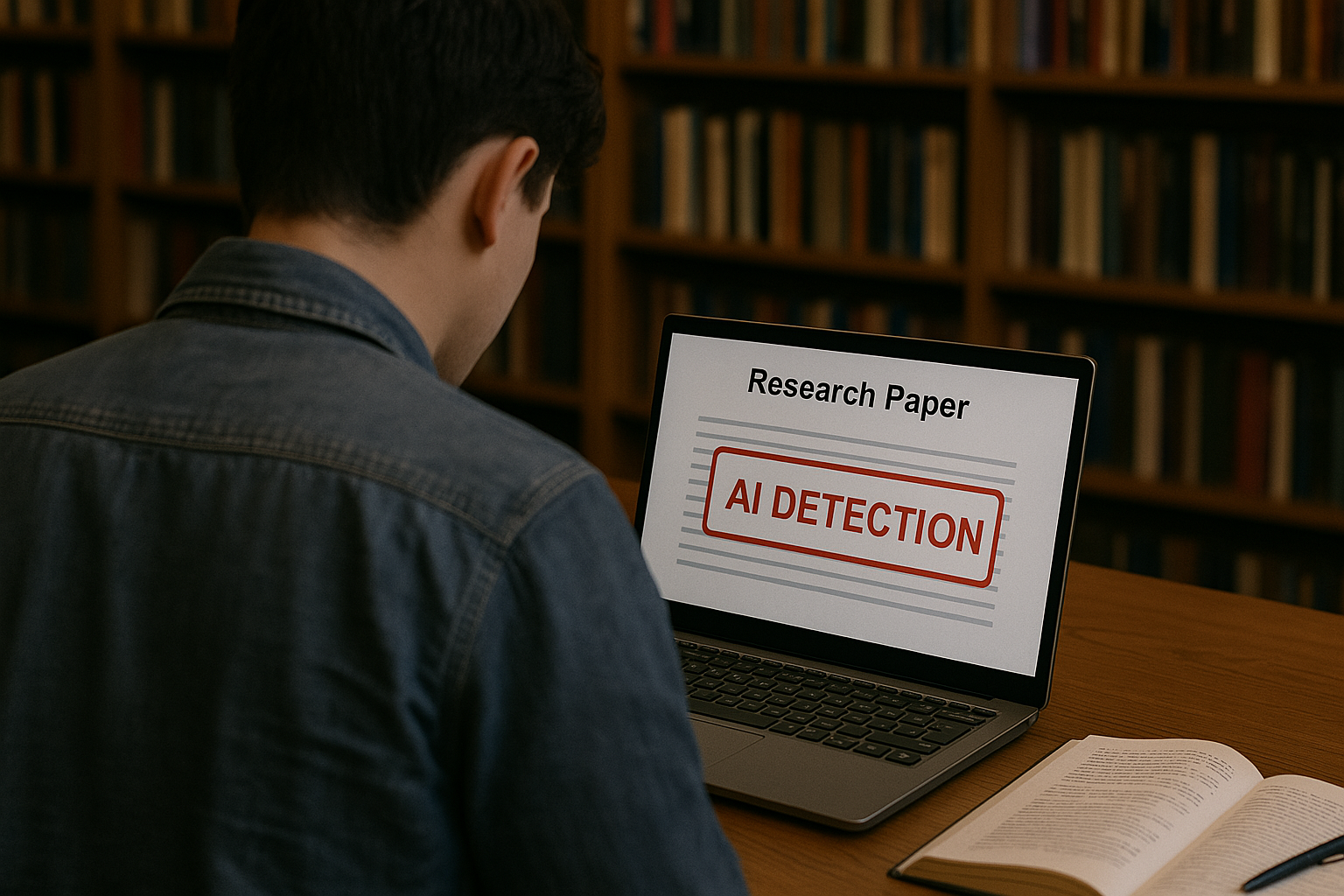Let’s Learn How AI Detectors Actually Work
If you want to identify text written by neural networks, AI detectors are absolutely necessary, but most people still don’t understand how they work.
But as more and more writers use AI to create content, it’s important to understand how these tools can spot text written by a machine, either to avoid publishing a subpar piece, or improve the copy. Let’s break it down.
The 3 Main Things That AI Detectors Look At
All text is just text, right? If so, how can we tell if a piece of text was written by a person or a machine?
AI detectors primarily work by analyzing three things: perplexity, burstiness and token probability distributions.
Perplexity
Perplexity shows how predictable the next word is based on the words that came before it.
People’s writing usually has more perplexity because we tend to make choices with words that are unexpected, use slang, and sometimes break the rules of grammar.
However, AI-generated text tends to have lower perplexity: words are statistically probable and create smooth, predictable writing.
Burstiness
Burstiness is when sentences vary in length and complexity.
People naturally write with an irregular rhythm. We mix short, punchy sentences with longer, more complex sentences. AI models, especially older ones, often create sentences that are very similar, which makes the content predictable.
Token probability distributions
Modern detectors also examine token probability distributions. When language models generate text, they assign probabilities to potential next words based on their training data.
Detectors can figure out these probabilities by checking if the words chosen are too similar to what a model would predict. This method works especially well when the detectors are trained with the same data sets or model structures.
Other Things AI Detectors Might Look Like
The best AI detectors use a few different advanced methods, such as:
Stylometric analysis. Stylometric analysis looks at writing style, including the variety of words used, the way sentences are put together, and the punctuation.
Cross-referencing. Cross-referencing is when detectors keep track of known AI-generated content and can spot phrases or patterns that have been used before. They also look at how well words and ideas match up across longer passages. While AI can keep things in line within paragraphs, it sometimes has trouble making sure everything lines up across an entire document.
Temperature analysis. Temperature controls how random the AI output is. Low-temperature outputs are easy to predict, while high-temperature outputs are more creative but sometimes unpredictable. Detectors can guess the likely temperature setting used to generate a text by looking at how coherent it is.
What are the Best AI Detectors?
Not all AI detectors are created equal. Now that we understand how they analyze text, let’s talk about which tools you should choose if you are looking for a reliable AI detector.
1. Overchat AI
The Overchat AI Detector is special because it has many layers of detection: perplexity analysis, and pattern recognition that looks like entire phrase structures. The AI Detector uses special advanced machine learning algorithms that have been trained on millions of text examples. This allows it to find details that simpler systems miss. It’s really good at finding newer AI models that have been trained to avoid being detected.
2. Copyleaks
Copyleaks is very good at identifying AI content that has been paraphrased or slightly edited. It does this by looking at how the structure is similar, even when the surface-level words are different.
Copyleaks also provides detailed reports showing which parts of text are most likely AI-generated, making it valuable for educators and publishers who need exact analysis.
3. ChatGPT
ChatGPT itself offers a surprisingly effective way to quickly check for problems. This works because ChatGPT can recognize patterns similar to its own writing style. It’s not as advanced as professional AI detectors, but it’s free and works well enough for quick checks, especially when checking content created by GPT models themselves.
4. Turnitin
Turnitin is very good at detecting AI-generated academic writing. It does this by looking at how citations are used, how arguments are developed, and how language is used in a specific discipline. Turnitin also checks submissions against published sources and previous student work. It’s the best tool for determining whether an essay was written by a human or a robot.
Bottom Line
There’s still one problem with AI detectors. Even the best tools aren’t always accurate. This is because texts can be very creative — it’s not an exact science. Also, AI models are improving all the time. For example, Claude Sonnet 4 is slightly better at writing human-like text than Claude Sonnet 3.7. As a result, AI output becomes a little bit more similar to the way people write.
Some AI models are designed to be completely undetectable. Also, the accuracy of the system’s detection drops a lot for short texts, content that has been heavily edited, or writing in areas where both humans and AI might use similar technical language.
In the future, AI detection will probably look at not just the final text, but also how it was written. This way, we could get more detection signals — we look at how people type, how they revise, and when they do it. In the near future, AI detectors are likely to become part of operations systems and text editors. They won’t be standalone tools anymore.

















